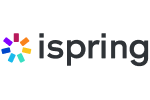Providing a great employee experience has moved beyond being a competitive differentiator. As employees’ search for “greener pastures” continues — with 40% unhappy at work and considering leaving in the near term, according to McKinsey — focusing on the employee experience is an urgent priority for businesses today. What’s more, the global talent shortage, combined with low unemployment rates, tips the balance of power into employees’ hands; with more and more able to work from anywhere, they’re empowered to find the position that suits their career goals and lifestyle.
So don’t dawdle or procrastinate in assessing and addressing the employee experience. If you wait until problems arise, such as increased attrition, it’s often too late. The damage is done. Instead, companies can drive productivity and promote retention with a proactive approach.
A critical part of that approach is focusing on the employee lifecycle — spanning recruitment, onboarding, development, retention and even offboarding — and embedding ongoing learning and development (L&D), support and growth opportunities into those stages.
Now, if this were a manual process — combing through data across departments, systems and formats to detect skills gaps and create tailored learning paths — you might be tempted to throw your hands up in despair. Near-impossible, right? Who has the time to crunch all the numbers, detect patterns and anomalies, and make sure they’re doing it right?
Getting Extra Hands Through AI
Fortunately, this is an area where artificial intelligence (AI) can help (and help quickly), specifically in the form of AI-enabled learning platforms. These allow companies to create and customize employee development opportunities, continuously monitor and improve training processes, and drive better training results and return on investment (ROI).
Yet with all the buzz about AI, it can be hard to separate the hype from necessary platform features. What core, AI-enabled capabilities can help you get the job done — and done well — creating helpful and engaging experiences across the employee lifecycle? Look for built-in, AI-driven support for:
- Skills development, from reskilling to upskilling, right-skilling and new-skilling.
- Personalized recommendations, so employees — based on their roles, aptitudes, interests, previous courses and certifications, etc. — can automatically be guided to the next best action in their learning journey, whether that’s watching a brief video tutorial, taking a course, connecting with an expert, visiting a forum and so on. A recommendation engine is the core part of an AI-infused platform.
- Goal-setting, so employees and their managers can help architect learning outcomes (whether that’s attaining a new skill or even role) and influence learning recommendations.
- Competency-based learning, including the ability to tag learning content with competencies (which get fed into the recommendation engine), and help employees hone their skills and competencies on an individual level, on a timeline that makes sense for them.
- Analytics, so you know, at a glance, what’s working and where improvement may be needed.
AI Across the 5 Stages of the Employee Lifecycle
So, let’s get down to specifics, shall we? How can you use an AI-enabled learning platform and the features above to improve each part of the employee lifecycle? Let’s look at each stage:
1. Recruitment
Recruitment encompasses all the processes that lead up to, and include, the hiring of new employees. You can mine rich training data — or rather, let your AI platform do this for you — to make sure you’re getting the best-fit candidates.
As mentioned, an AI-enabled platform enables competency and skills development. In the platform, companies can specify competencies based on job profiles, and use analytics to identify skills gaps and pinpoint where their workforce may be lacking.
At the recruitment stage, human resources (HR) managers — often in partnership with L&D — can tap into this trove of data to create targeted job descriptions and profiles. They’ll know what the most important skills are for their workforce and can make hiring decisions accordingly.
2. Onboarding
Whether you’re welcoming remote, hybrid or in-person employees to your company, you can use an AI-based platform to get them up-to-speed quickly and smoothly. Since your learning platform and overall onboarding experience are a reflection of your company and its branding, it pays off to leave a good, professional first impression.
With your AI-enabled platform, it’s possible to automatically enroll new employees in the right courses and set them on the right onboarding and learning paths, based on their job title, goals, skills and certifications, etc. This eliminates the tedium (and sometimes irrelevance) of cookie-cutter curricula, and lets new hires dive into what they need to learn and use in their specific roles.
So, while two new employees — let’s say a marketer and a developer — might both see company-related courses (e.g., on HR policies, basic branding, etc.) in their learning portal, their paths would automatically diverge from there. What’s more, no two developers’ (or marketers’) journeys would be exactly alike, with content recommendations tailored to their seniority, interests, goals, skill sets and so on.
In addition, new hires’ actions (or inaction) in the platform can automatically trigger reminders regarding course enrollments, certifications and more that improve onboarding and optimize learning.
3. Development
An AI-enabled platform also supports employees in their career development, because they can set goals and milestones that matter to them. Subsequently, the content they view and the recommendations surfaced are highly relevant, which motivates employees to complete their training on time.
And with employees having concrete goals, learning outcomes are less subjective and more easily measurable. It’s easy for managers and coaches to provide specific feedback based on employee progress and course completion and assessment data — which can be instantly accessed through the platform. They can see what their employees know and where they may be struggling, and address potential problems before they snowball.
When you use your learning platform to support professional development and targeted feedback in this way, employees will also come to view it as a one-stop-shop. If there’s a project they need to complete, or more advanced skills they need to attain, they can turn to it for just-in-time learning. This, in turn, feeds more valuable data back into the platform.
It should be noted that the content-based, career development recommendations your platform provides are only as good as the content it has access to. But don’t let this intimidate you: Companies don’t need to worry about creating all the learning materials their employees will need throughout their lifecycle. Instead, focus on developing company-, process- and product-related content. Your learning platform will likely integrate with quality learning providers, providing access to thousands more targeted courses.
4. Retention
As it relates to training, the retention stage of the employee lifecycle is closely tied to the development one. That’s because providing professional and skills development opportunities isn’t just important to your company — it’s also extremely important to employees themselves. In fact, 94% of employees say they would stay at a company longer if it invested in their learning and development, according to LinkedIn research.
An AI-enabled platform can promote job satisfaction and retention through the aforementioned development opportunities. In addition, the platform can automatically generate and issue certificates upon course completion, which employees can add to their profiles — fostering a sense of accomplishment through tangible results.
And with social connectedness and a feeling of “belonging” also tied to retention, your platform can help employees cultivate important bonds and connections. This often comes in the form of a learning community — where employees use the platform to share questions and ideas, give feedback, encourage each other and discuss projects.
Through AI, your platform may support mentorship opportunities, too. For example, if the platform detects an employee is stuck or has a learning gap, it can recommend (in addition to content) an internal subject matter expert (SME) who the employee can reach out to. This mentor, who typically has a dedicated mentor account, can help get the employee on the right path and provide support over the short or long term.
5. Offboarding
A primary goal of an AI platform is to help you create a valuable and sustainable learning ecosystem. That means when employees leave, the knowledge they’ve accumulated doesn’t all leave with them.
The good news is that your AI platform can drive a healthy learning ecosystem, preserving knowledge even when employees depart. As platform users, employees consent to share certain data and learning contributions with their company — which still exist after they leave. For example, maybe a former employee asked or answered a question on a forum related to a certain skill. Maybe they shared resources, created learning content or helped others as a mentor. Current employees can still benefit from this information, and companies can use it to develop better training.
The Future of Learning is AI-enabled
Today, there are more and more opportunities for companies to improve learning and development with AI; it touches all areas of the employee lifecycle. What’s more, AI-driven capabilities are quickly moving from cutting-edge, nice-to-have features to becoming staples in intelligent learning management systems (LMSs) today. As companies look to optimize training, drive efficiencies, and deliver an engaging and high-impact employee experience, AI platforms can lead the way.








